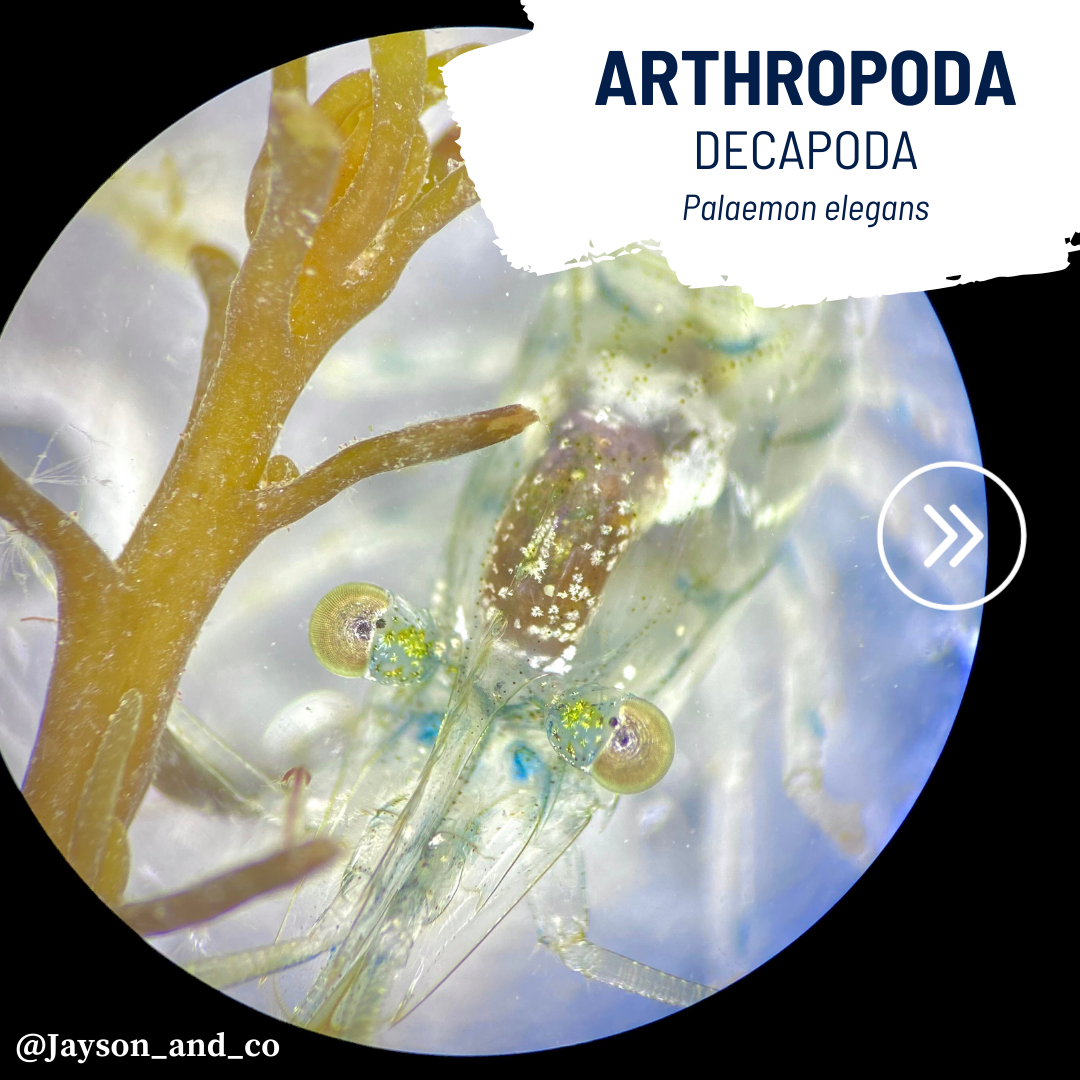Palaemon elegans
ARTHROPODA
Decapoda
🦐 🦐Meet the rockpool prawn, also known as 𝘗𝘢𝘭𝘢𝘦𝘮𝘰𝘯 𝘦𝘭𝘦𝘨𝘢𝘯𝘴. This little critter can often be spotted in the rocks when the tide retreats.
🌡️🌊They can tolerate extremely variable environmental conditions, including a wide range of salinities, temperatures and oxygen. As a result, 𝘗𝘢𝘭𝘢𝘦𝘮𝘰𝘯 𝘦𝘭𝘦𝘨𝘢𝘯𝘴 can found on the Atlantic ocean West coast from Norway to Mauritania, and in the entire Mediterranean Sea and Black Sea.
🦀🦞Prawns belongs to 𝘿𝙚𝙘𝙖𝙥𝙤𝙙𝙖, just like crab and lobsters. The name 𝘿𝙚𝙘𝙖𝙥𝙤𝙙𝙖 originates from Greek roots, ‘𝘥𝘦𝘤𝘢’ meaning ‘ten’ and ‘𝘱𝘰𝘶𝘴’ meaning ‘foot,’ aptly describing these creatures with ten legs!
🎣 🕵️♀️Rockpool prawns are masters of camouflage: with their translucent bodies and stripped patterns, they blend seamlessly into their surroundings. This makes them elusive targets for predators and challenging to catch for me !
🫀🔙 Thanks to the transparency of this shrimp species 𝘗𝘢𝘭𝘢𝘦𝘮𝘰𝘯 𝘦𝘭𝘦𝘨𝘢𝘯𝘴, you can see the heart beat through their back! Indeed, unlike us with our hearts in the front, insects and crustaceans have theirs on their backs!
🦐 💧But here’s the cool part: like all arthropods, shrimps have an open circulatory system, and use a fluid called hemolymph – analogous to blood in vertebrates – to transport nutrients and oxygen around their body cavity. You probably also noticed that hemolymph is not red like blood, but rather blue (in theory! here it looks quite transparent I have to admit😅).

